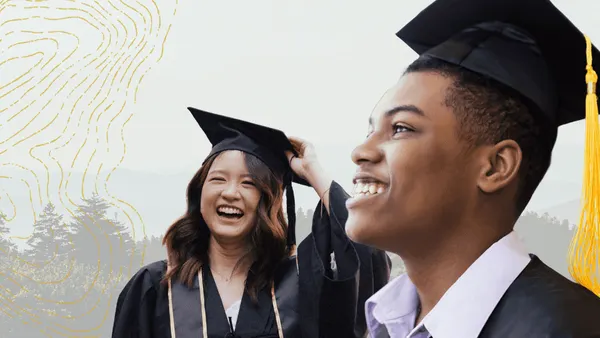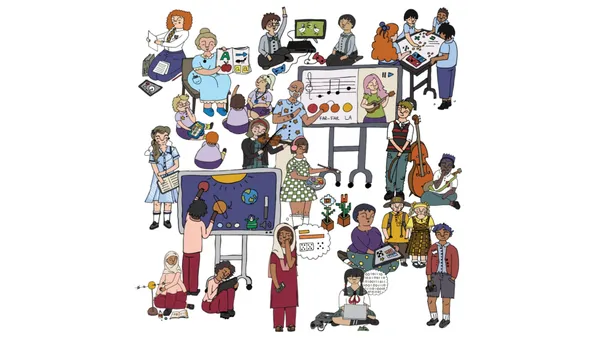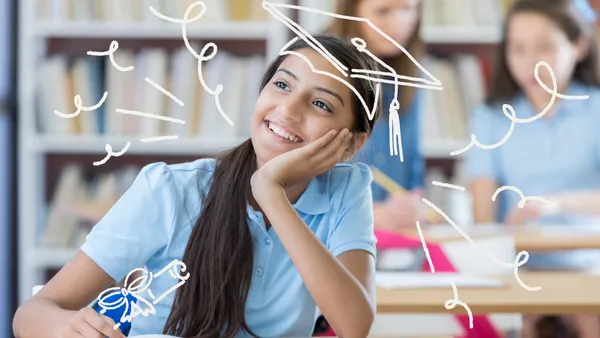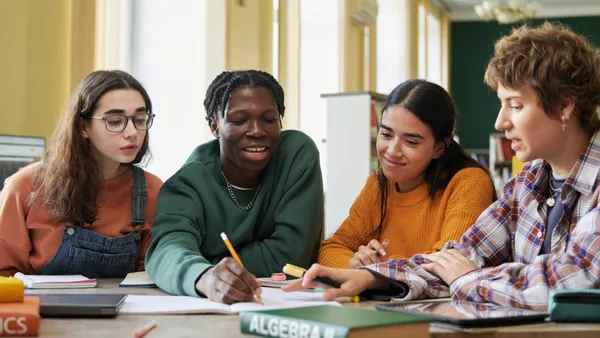Dive Brief:
- Across the U.S., more K-12 schools are saying no to STEM alone and incorporating more arts education.
- One way of incorporating the arts and encouraging innovation is to blend music and art into science, technology, engineering, and mathematics learning.
- “If we ignore the arts side, the creative side, we lose the soul of what we’re doing and the why of what we’re doing,” Superintendent Greg Little of North Carolina's Mt. Airy City Schools told District Administration of moves toward STEAM.
Dive Insight:
According to District Administration, a blended STEAM education can help students later land traditional tech-oriented STEM jobs, many of which seek out creativity and outside-the-box thinking in addition to technical skills. Adding arts into the equation can also help students learn by removing the rigidity of the traditional right or wrong dichotomy found in STEM education, encouraging them to innovate.
Advocates also say it makes students more well-rounded. Two examples of STEAM exercises provided include “choreographing dance-like movements to demonstrate how bees pollinate plants” and “designing, building and testing their own squirrel-proof bird feeders” after reading a book about squirrels.
Because arts in education is often on the chopping block when it comes to slashing budgets, however, re-incorporating such programs in schools can be tough. For many teachers and schools, collaboration is key to blending subjects.



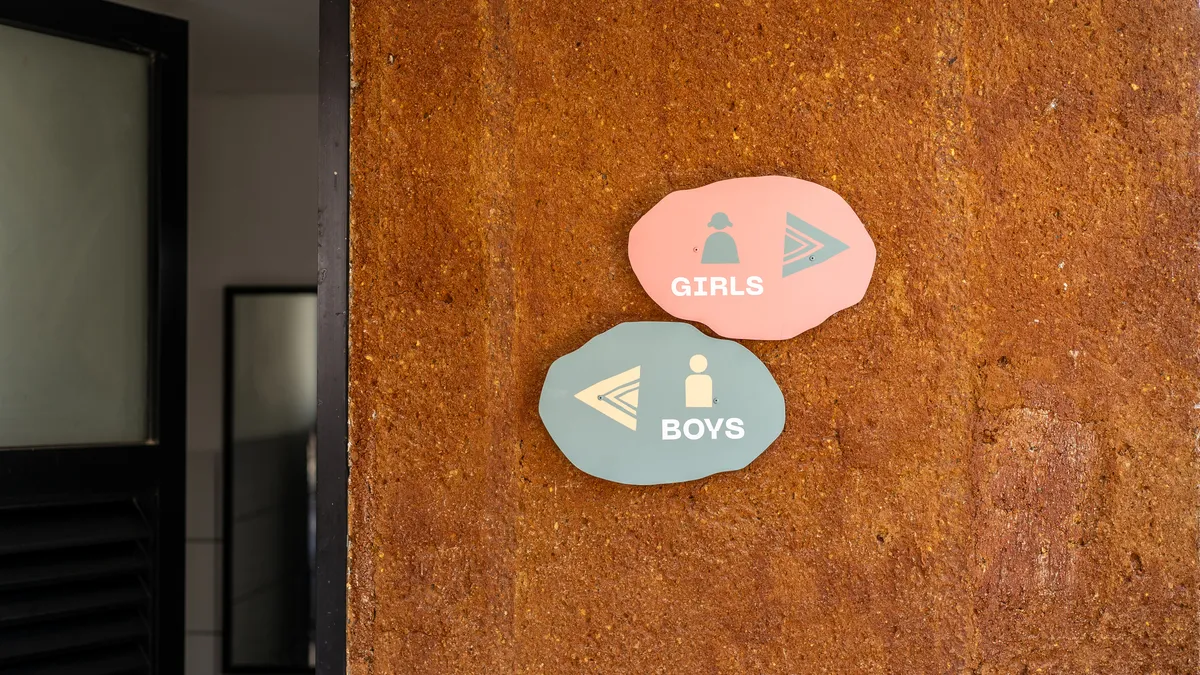

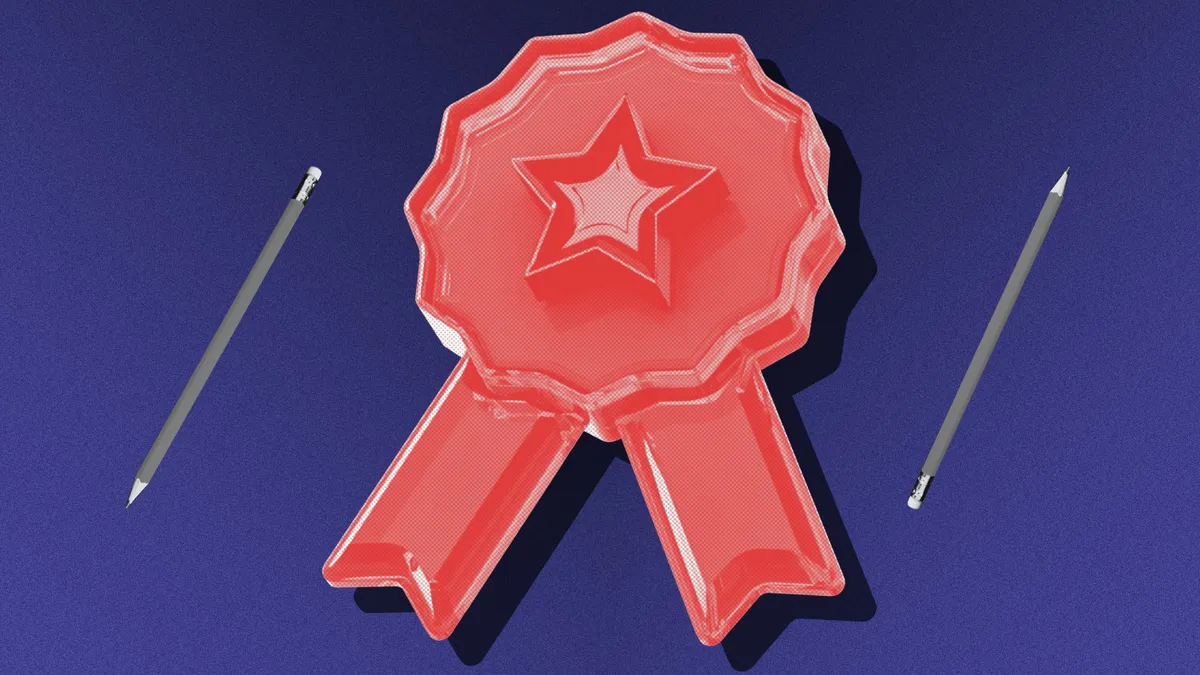
 Dive Awards
Dive Awards

